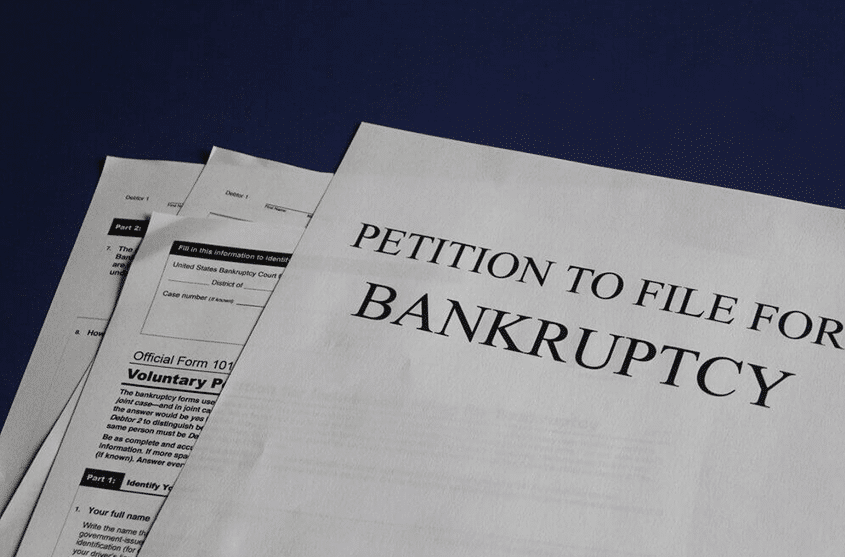
There are two types of bankruptcies this blog will focus on: Chapter 7 and Chapter 13. For a Chapter 7, there are two types. The first is a liquidation where there are no assets inside the bankruptcy. The second is a liquidation with an asset. This mean that the person filing has a house or other substantial asset.
A Chapter 13 is more or less a payment plan over time which protects you from immediate collection/garnishment efforts from creditors and even a foreclosure from a lender.
What chapter you file under will greatly depend on your current financial condition, your assets, and your income.
The typical Chapter 7 takes about 90 days to complete. A Chapter 13 takes about 90 to 120 days for the Plan to get confirmed and can be in effect for up to 5 years.
There are two types of bankruptcies this blog will focus on: Chapter 7 and Chapter 13. For a Chapter 7, there are two types. The first is a liquidation where there are no assets inside the bankruptcy. The second is a liquidation with an asset. This mean that the person filing has a house or other substantial asset.
A Chapter 13 is more or less a payment plan over time which protects you from immediate collection/garnishment efforts from creditors and even a foreclosure from a lender.
What chapter you file under will greatly depend on your current financial condition, your assets, and your income.
The typical Chapter 7 takes about 90 days to complete. A Chapter 13 takes about 90 to 120 days for the Plan to get confirmed and can be in effect for up to 5 years.
Reasons why you may consider filing for Bankruptcy in California
The main reason a person may want to consider filing for bankruptcy overall is to stop collection efforts from creditors.
Chapter 7
One of the main inquiries we get at The Sands Law Group, APLC is do I qualify for a Chapter 7 bankruptcy. The starting point of this analysis is the means test. This is a first inquiry as to whether or not a Chapter 7 is a right avenue for the debtor. Currently, the following incomes are relevant in the State of California:
- 1-person household: $60,360
- 2-person household: $79,271
- 3-person household: $88,235
- 4-person household: $101,315
- Each additional person: $9,000.
Even if you are over the threshold, this does not mean that you will not qualify for a Chapter 7. If you are over the threshold, it simply creates another inquiry for the Court and the Trustee to consider in whether a Chapter 7 is the appropriate petition.
One type of Chapter 7 is a liquidation where the debtor has no substantial assets and a lot of unsecured credit card debt. The ideal candidate for this type of Chapter 7 would be someone who is renting and has just lots their job and is living off of minimal savings and credit cards.
The other type of Chapter 7 is filing with an asset. Typically, this is a piece of real property or something of substantial value. A filer who is under the age of 65 has a homestead of exemption of $75,000 which means that they are able to protect or keep up to this amount of equity in the real property protected. If they live with someone then this moves up to $100,000. If the party is over the age of 65 then they are allowed to claim an exemption of $175,000.
Finally, a debtor must complete a pre-petition filing course as well as file a second financial management course in order to obtain a discharge.
Next there is a meeting of creditors which occurs typically 45 days after the filing of the Chapter 7. Here is the opportunity for creditors to ask questions about the debtor’s income and debts. After the trustee and the creditors have completed their questions, the trustee will either continue the hearing to gain further information. If the trustee has no further questions a discharge will typically be entered about 60 days after the conclusion of the meeting of creditors. A discharge will not be entered until the debtor completes the second financial course.
Chapter 13
A Chapter 13 is typically called a wage earners bankruptcy. The reason a debtor must consider filing a Chapter 13 bankruptcy is because their assets are to high in value or their income is too high or both.
In a Chapter 13 setting, your unsecured debt cannot exceed $394,725, and your secured debt cannot exceed $1,184,200. Chapter 13 acts like a consolidation loan under which the individual makes the plan payments to a chapter 13 trustee who then distributes payments to creditors. Individuals will have no direct contact with creditors while under chapter 13 protection.
A chapter 13 case begins by filing a petition with the bankruptcy court serving the area where the debtor has a domicile or residence. Unless the court orders otherwise, the debtor must also file with the court:
- schedules of assets and liabilities;
- a schedule of current income and expenditures;
- a schedule of executory contracts and unexpired leases; and
- a statement of financial affairs.
The debtor must also file a certificate of credit counseling and a copy of any debt repayment plan developed through credit counseling; evidence of payment from employers, if any, received 60 days before filing; a statement of monthly net income and any anticipated increase in income or expenses after filing; and a record of any interest the debtor has in federal or state qualified education or tuition accounts. The debtor must provide the chapter 13 case trustee with a copy of the tax return or transcripts for the most recent tax year as well as tax returns filed during the case (including tax returns for prior years that had not been filed when the case began). A husband and wife may file a joint petition or individual petitions.
Chapter 13 Bankruptcy and the Confirmation Hearing
The debtor must file a repayment plan with the petition or within 14 days after the petition is filed. A plan must be submitted for court approval and must provide for payments of fixed amounts to the trustee on a regular basis, typically biweekly or monthly. The trustee then distributes the funds to creditors according to the terms of the plan, which may offer creditors less than full payment on their claims.
There are three types of claims: priority, secured, and unsecured. Priority claims are those granted special status by the bankruptcy law, such as most taxes and the costs of bankruptcy proceeding. (3) Secured claims are those for which the creditor has the right take back certain property (i.e., the collateral) if the debtor does not pay the underlying debt. In contrast to secured claims, unsecured claims are generally those for which the creditor has no special rights to collect against particular property owned by the debtor.
The plan need not pay unsecured claims in full as long it provides that the debtor will pay all projected “disposable income” over an “applicable commitment period,” and as long as unsecured creditors receive at least as much under the plan as they would receive if the debtor’s assets were liquidated under chapter 7.
Within 30 days after filing the bankruptcy case, even if the plan has not yet been approved by the court, the debtor must start making plan payments to the trustee.
What are chapter 13 debtors entitled to in California?
The bankruptcy law regarding the scope of the chapter 13 discharge is complex and has recently undergone major changes. Therefore, debtors should consult competent legal counsel prior to filing regarding the scope of the chapter 13 discharge.
A chapter 13 debtor is entitled to a discharge upon completion of all payments under the chapter 13 plan so long as the debtor:
- certifies (if applicable) that all domestic support obligations that came due prior to making such certification have been paid;
- has not received a discharge in a prior case filed within a certain time frame (two years for prior chapter 13 cases and four years for prior chapter 7, 11 and 12 cases); and
- has completed an approved course in financial management (if the U.S. trustee or bankruptcy administrator for the debtor’s district has determined that such courses are available to the debtor).
The court will not enter the discharge, however, until it determines, after notice and a hearing, that there is no reason to believe there is any pending proceeding that might give rise to a limitation on the debtor’s homestead exemption.
Disadvantages when filing Chapter 7 or Chapter 13 bankruptcy in California
If your initial discharge were under a Chapter 7, you’d be eligible for a Chapter 13 discharge four years after the filing date of the initial Chapter 7. If you file a Chapter 13 and you were issued a discharge, you are currently required to wait 6 years before you can file again.
If your Chapter 13 was dismissed without a discharge, then you are allowed to file immediately. However you run the risk of not receiving the benefit of the automatic stay.
Should you have a question about filing bankruptcy, please feel free to contact us directly online or call our office at 213-788-4412 to schedule a consult today. You can also e-mail us at info@thesandslawgroup.com
Meet Thomas Sands –
Experienced Los Angeles Divorce & Family Attorney

Thomas D. Sands is a highly experienced and widely respected divorce and family attorney serving clients throughout Los Angeles, Riverside, and San Bernardino counties for more than 2 decades. As the founder and principal family attorney at The Sands Law Group, APLC, Thomas Sands is dedicated to providing strategic, cost-effective legal representation to individuals and families facing some of life’s most difficult transitions.
Clients trust Thomas Sands not only for his legal knowledge but also for his compassion. Whether you are facing a straightforward divorce or a complex high net worth separation, Thomas provides strategic, results-driven guidance tailored to your unique situation. He understands the emotional toll that divorce and custody disputes can take, and he approaches every case with a commitment to minimizing stress while vigorously protecting your rights and long-term interests. His client-first philosophy has earned him a strong reputation among both peers and families across Southern California.
The Sands Law Group, APLC reflects Thomas Sands’ dedication to service and inclusivity. The firm offers multilingual legal support in English, Spanish, French, Hebrew, and Arabic, ensuring that clients from diverse backgrounds receive clear communication and culturally sensitive representation. Whether through negotiation or litigation, Thomas Sands strives to achieve favorable outcomes while helping clients avoid unnecessary delays and expenses.
In recognition of his excellence in family law advocacy, Thomas Sands has received numerous accolades, including being named Litigator of the Year by the American Institute of Trial Lawyers and Lawyer of the Year by the American Institute of Legal Professionals in 2023. These honors reflect his ongoing commitment to delivering exceptional legal results with professionalism and care.









